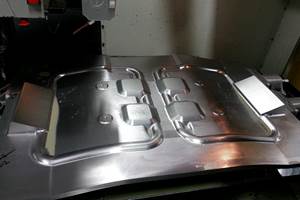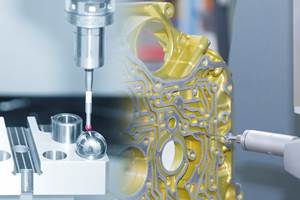Why So Much Life Insurance?
The tax breaks make it an attractive strategy for creating more wealth.
Share





Why do the rich buy so much life insurance? The answer is that tax law creates a special tax-free environment just for life insurance. This law provides an easy way to create more tax-free wealth, but those in the highest income tax and estate tax brackets most often take advantage of it.
Review the math to see the difference between $1 million in a taxable environment versus the same amount in a tax-free scenario.
Is $1 Million a Lot of Money?
In a taxable environment, it is more than you think. How many dollars must you actually earn in order to for your family to receive $1 million, after taxes, at your death? Here’s the math:
You must earn: $ 2,780,000
Less state/federal income taxes of 40% on that $2.78 million: - 1,110,000
For a balance of: 1,670,000
Less estate tax of 40% on that $1.67 million: - 670,000
For your family to receive: 1,000,000
This is a lousy deal. The tax collector gets $1.78 million (64 percent) of the $2.78 million you earn, and your family only gets $1 million (36 percent). Life insurance, when properly structured, is a little bit of “tax magic” that beats this tax monster.
Tax Law Allows You to Perform Magic
Insurance premiums are deductible for estate tax purposes, so, in effect, the IRS pays 40 percent of the premium. Suppose you purchase a $2-million policy and end up paying $500,000 in premiums by the time you die. That $500,000 is gone and can’t be taxed by the estate tax monster, but your heirs will receive the $2 million insurance payout, tax-free. If you had not bought the policy, that $500,000 you did not spend would go to your family, but estate taxes would take $200,000 of it, leaving them with only $300,000.
As you pay the annual premiums during your life, the cash surrender value (CSV) of your policy will increase a little bit each year. The CSV may even exceed the total premiums you end up paying. You also can borrow the CSV, and this loan money is tax-free. If the loan is not repaid during your lifetime, it will be repaid at your death from the proceeds of the policy, also tax-free.
At your death, the amount of the death benefit that your heirs will receive over the amount of premiums paid is tax-free. So, on a $1-million policy minus $250,000 in premiums paid, $750,000 is clear profit—no income taxes. That $1 million death benefit is free from estate taxes as well. If it is not structured exactly right, however, the estate tax monster will get $400,000 of it.
In addition, if you are married and die with a $10-million policy on your life that is owned by an irrevocable life insurance trust (ILIT) with your wife as beneficiary, there is no estate tax at your death. When your wife dies, every penny in that ILIT (which may continue to grow) will pass to her heirs, also tax-free.
Other Little-known Strategies
There are actually dozens of insurance strategies you can use to leverage your wealth, but the following are three that I have used over and over with my clients.
• Move funds from a qualified plan. Funds in a qualified plan such as a 401(k) or IRA are subject to both income and estate taxes. To avoid this double tax, use one of these two strategies: formation of a subtrust or a “retirement plan rescue.”
Joe, for example, currently has $1 million in his 401(k). Even if he and his wife, Mary, each live five years beyond their life expectancy, the after-tax amount that will go to their heirs is expected to be only $1.15 million. Using a subtrust and a second-to-die life insurance policy, Joe and Mary’s heirs will receive $3.53 million, tax-free.
If you have $400,000 or more in a qualified plan, you also owe it to your family to look into a “retirement plan rescue” (RPR). Sam has $900,000 in an IRA that will be worth only $324,000 after the double tax. If he uses an RPR to purchase a $10-million second-to-die policy, he can avoid every penny of the estate tax.
• Exchange existing life insurance policies with CSVs. Frank acquired a second-to-die policy in 1996 that insured him and his wife, Faye, and was owned by an ILIT. Its current CSV was $850,000 and death benefit was $1.53 million. Through a tax-free exchange, he was able to raise that death benefit to $3.48 million with no out-of-pocket costs. Any CSV policy that is at least eight years old should be evaluated for this strategy.
• Purchase annuities. First, Matt and his wife, May, bought an immediate joint life annuity for $1 million that will pay $43,843 a year for as long as either of them is alive. Then they used the after-tax amount of the annuity to pay the premiums on a $5.68 million second-to-die policy. The after-estate-tax value of Matt and May’s initial $1 million is only $600,000, so essentially they were able to turn $600,000 into $5.68 million.
You owe it to yourself and your family to put the tax magic outlined here to work for you.
Related Content
4 Tips for Staying Profitable in the Face of Change
After more than 40 years in business, this shop has learned how to adapt to stay profitable.
Read MoreRethink Quality Control to Increase Productivity, Decrease Scrap
Verifying parts is essential to documenting quality, and there are a few best practices that can make the quality control process more efficient.
Read More4 Rules for Running a Successful Machine Shop
Take time to optimize your shop’s structure to effectively meet demand while causing the least amount of stress in the shop.
Read MoreHow to Determine the Currently Active Work Offset Number
Determining the currently active work offset number is practical when the program zero point is changing between workpieces in a production run.
Read MoreRead Next
Machine Shop MBA
Making Chips and 91ÊÓƵÍøÕ¾ÎÛ are teaming up for a new podcast series called Machine Shop MBA—designed to help manufacturers measure their success against the industry’s best. Through the lens of the Top Shops benchmarking program, the series explores the KPIs that set high-performing shops apart, from machine utilization and first-pass yield to employee engagement and revenue per employee.
Read MoreAMRs Are Moving Into Manufacturing: 4 Considerations for Implementation
AMRs can provide a flexible, easy-to-use automation platform so long as manufacturers choose a suitable task and prepare their facilities.
Read More

















